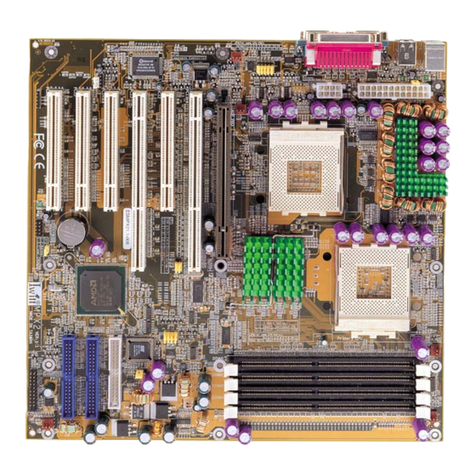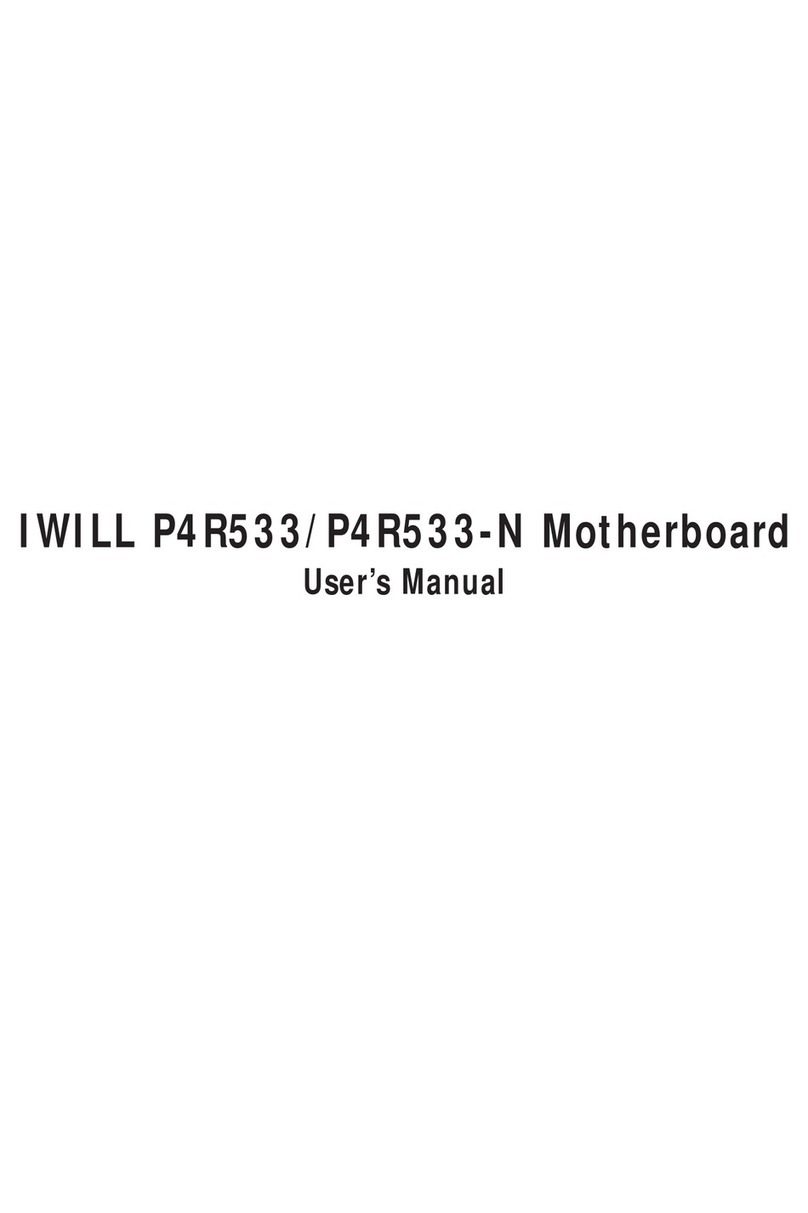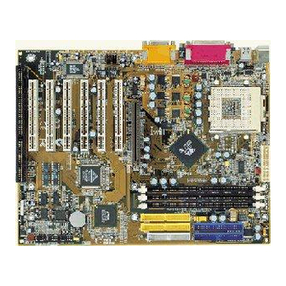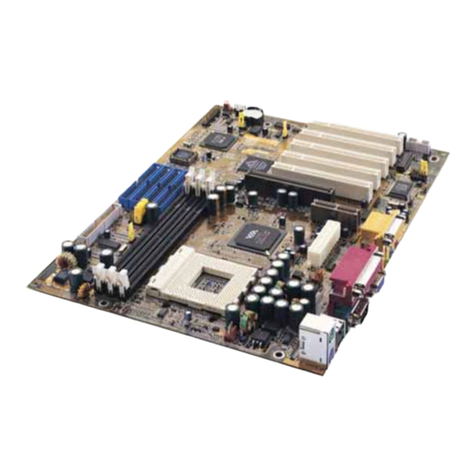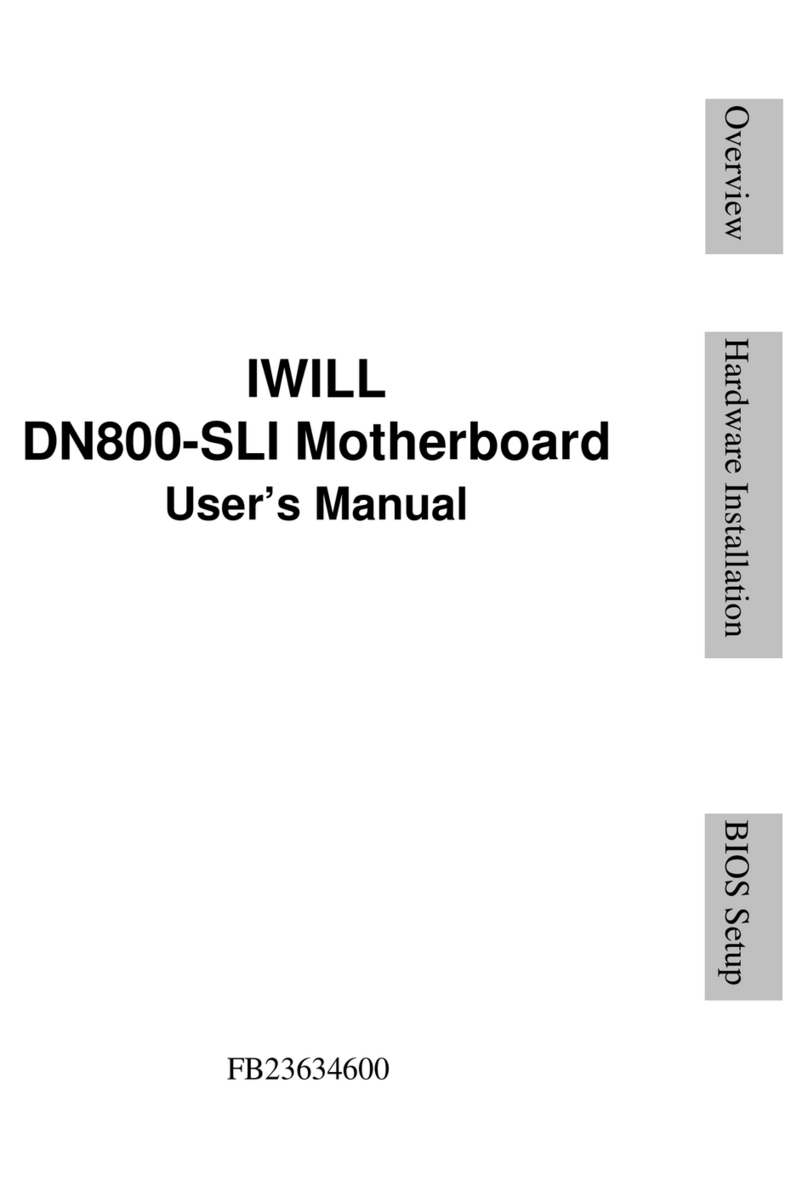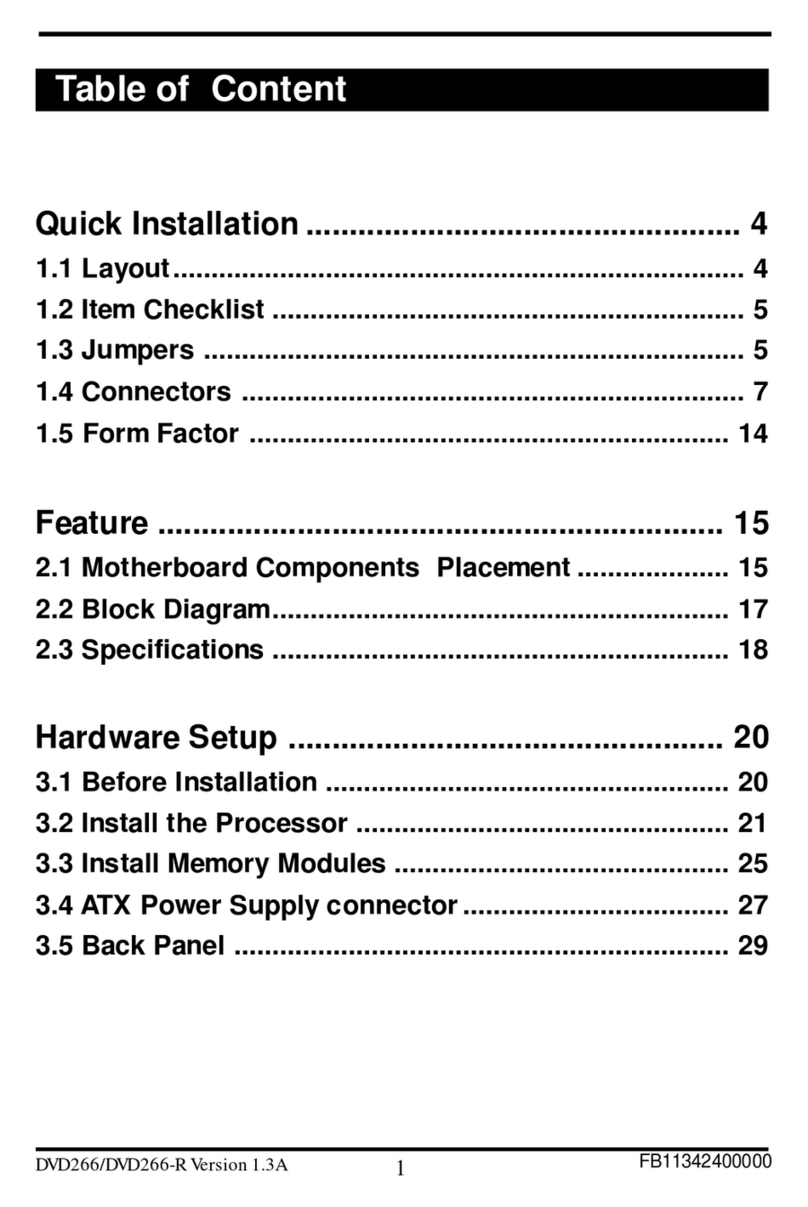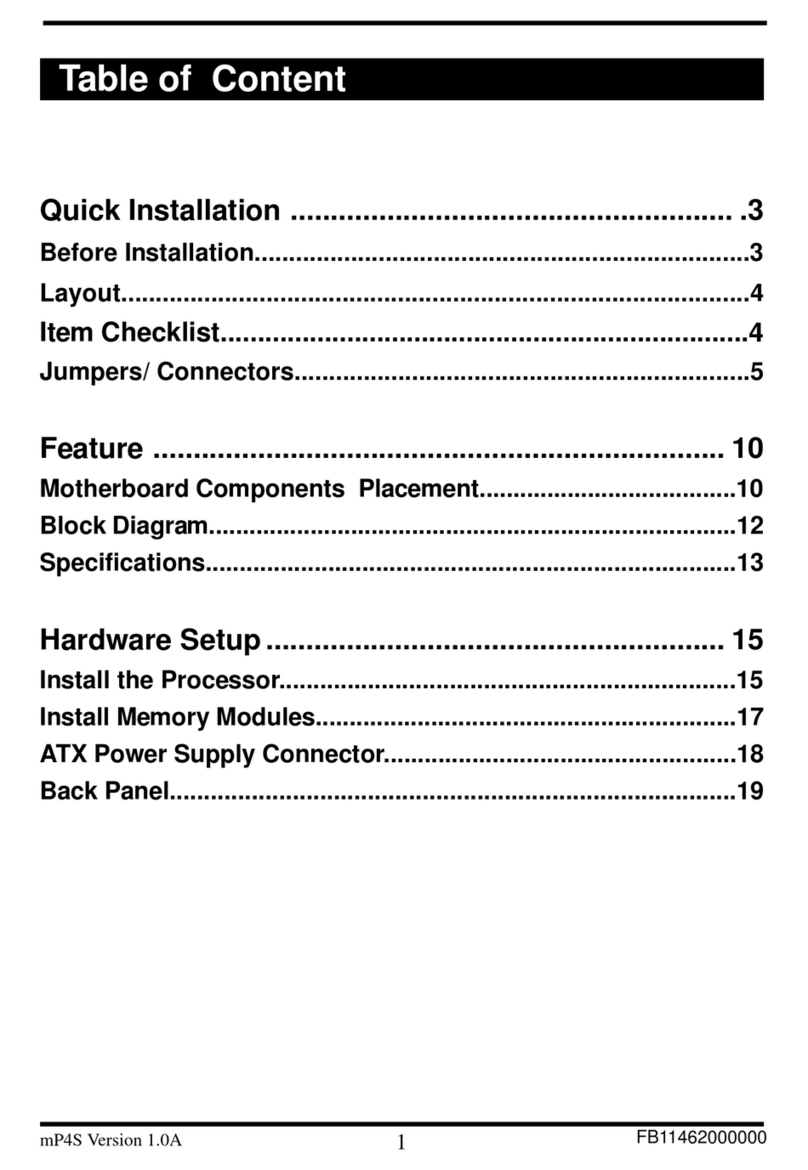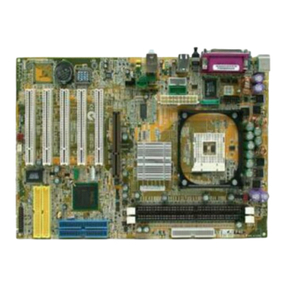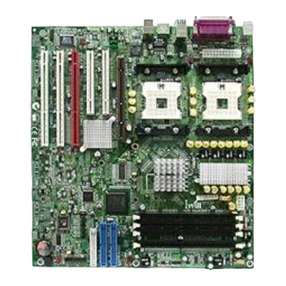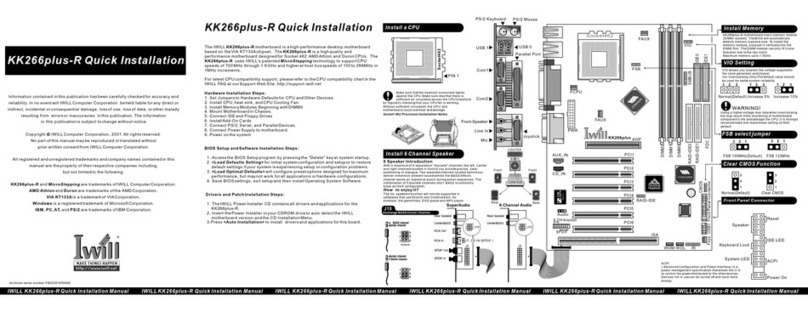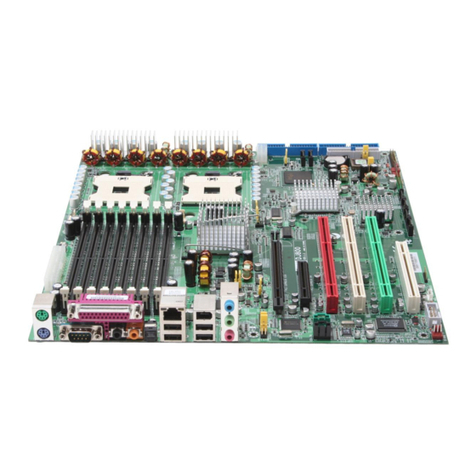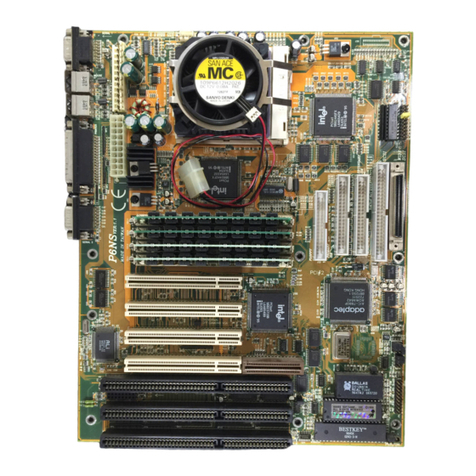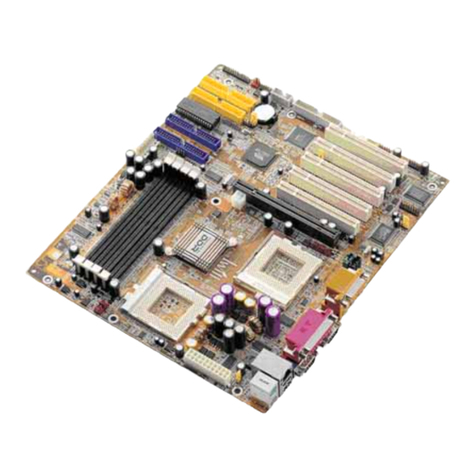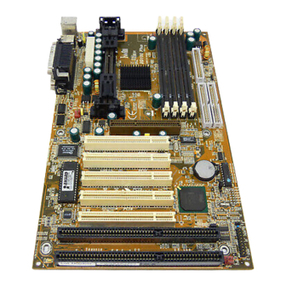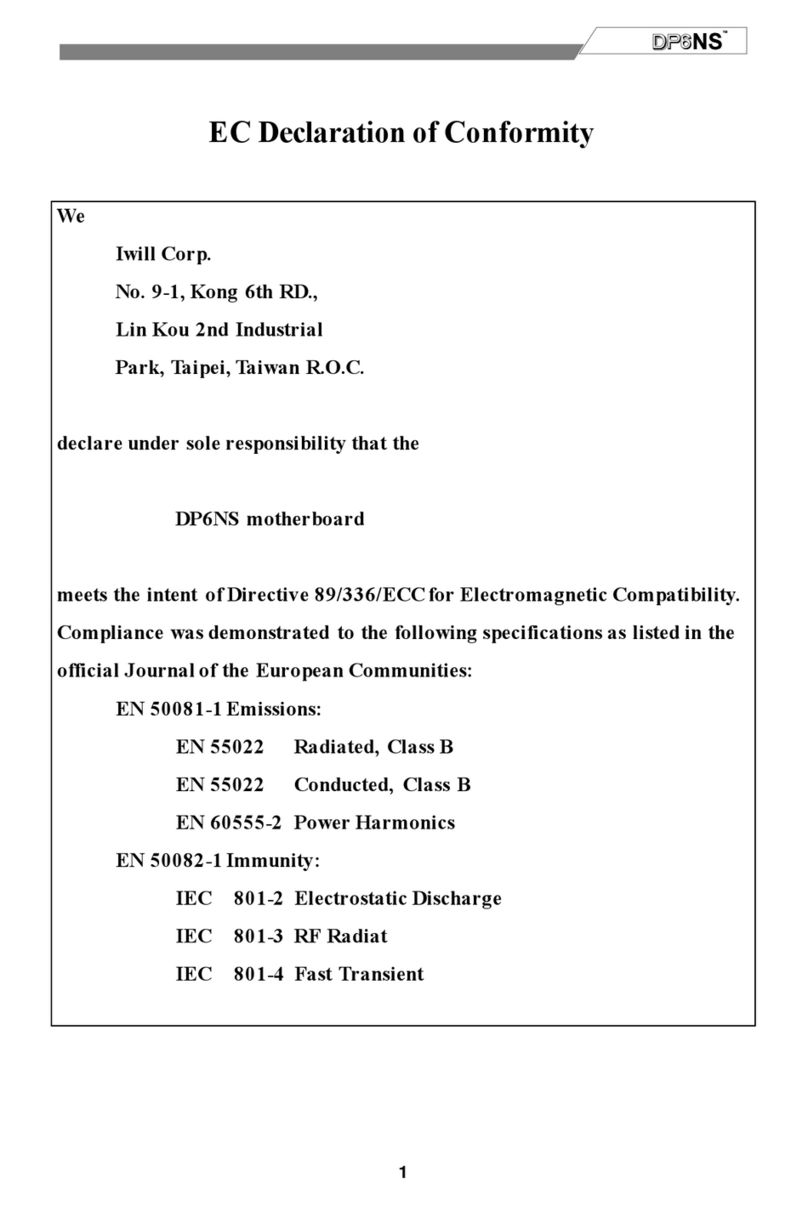
P4DA Motherboard
○○○○○○○○○○○○○○○○○○○○○○○○○○○○○○○○○○○○○○○○○○○○○○○○○○
User’s Manual VII
○○○○○○○○○○○○○○○○○○○○○○○○○○○○○○○○○○○○○○○○○○○○○○○○○○
Connecting Internal Devices ............................................................5.3
Connecting IDE Devices ...............................................................5.3
Connecting a Floppy Disk Drive...................................................... 5.4
Connecting External System Peripherals ............................................ 5.6
Connecting a Display Monitor ..........................................................5.6
Connecting a Keyboard & Mouse.......................................................5.6
Configuring the CMOS Setup Utility .................................................. 5.8
The CMOS Setup Utility User Interface ............................................... 5.8
Running the CMOS Setup Utility ....................................................5.8
CMOS Setup Utility Program Sections .............................................. 5.10
Standard CMOS Features ............................................................ 5.12
Advanced BIOS Features ............................................................ 5.13
Advanced Chipset Features ......................................................... 5.14
Integrated Peripherals ............................................................... 5.15
Power Management Setup .......................................................... 5.16
PnP/PCI Configurations ............................................................. 5.17
PC Health Status ...................................................................... 5.18
CPU Smart Setting .................................................................... 5.19
Load Fail-Safe Defaults.............................................................. 5.20
Load Optimized Defaults ............................................................ 5.20
Set Password ........................................................................... 5.21
Save & Exit Setup ..................................................................... 5.22
Exit Without Saving .................................................................. 5.22
Installing an OS & Support Software ............................................... 5.23
Installing an Operating System ...................................................... 5.23
Installing the Support Software ..................................................... 5.23
Installing Windows Drivers ......................................................... 5.24
The Make Driver Utility .............................................................. 5.26
Making Linux Support Disks ........................................................ 5.26
Installing the Utility Software ....................................................... 5.27
6: Using the Motherboard ..................................................... 6.1
Using System Features ..................................................................... 6.1
Front Panel System Controls & Indicators .......................................... 6.1
System Controls .........................................................................6.1
Indicator LEDs ...........................................................................6.3
System Wake Up Features ................................................................ 6.3
Wake-on LAN (WOL)....................................................................6.3
Wake-On-Modem (WOM) ..............................................................6.3
